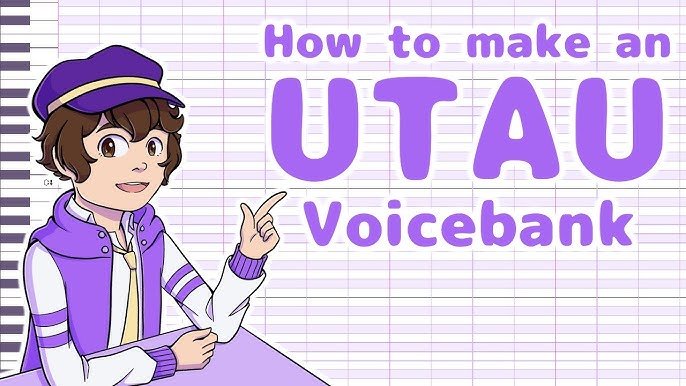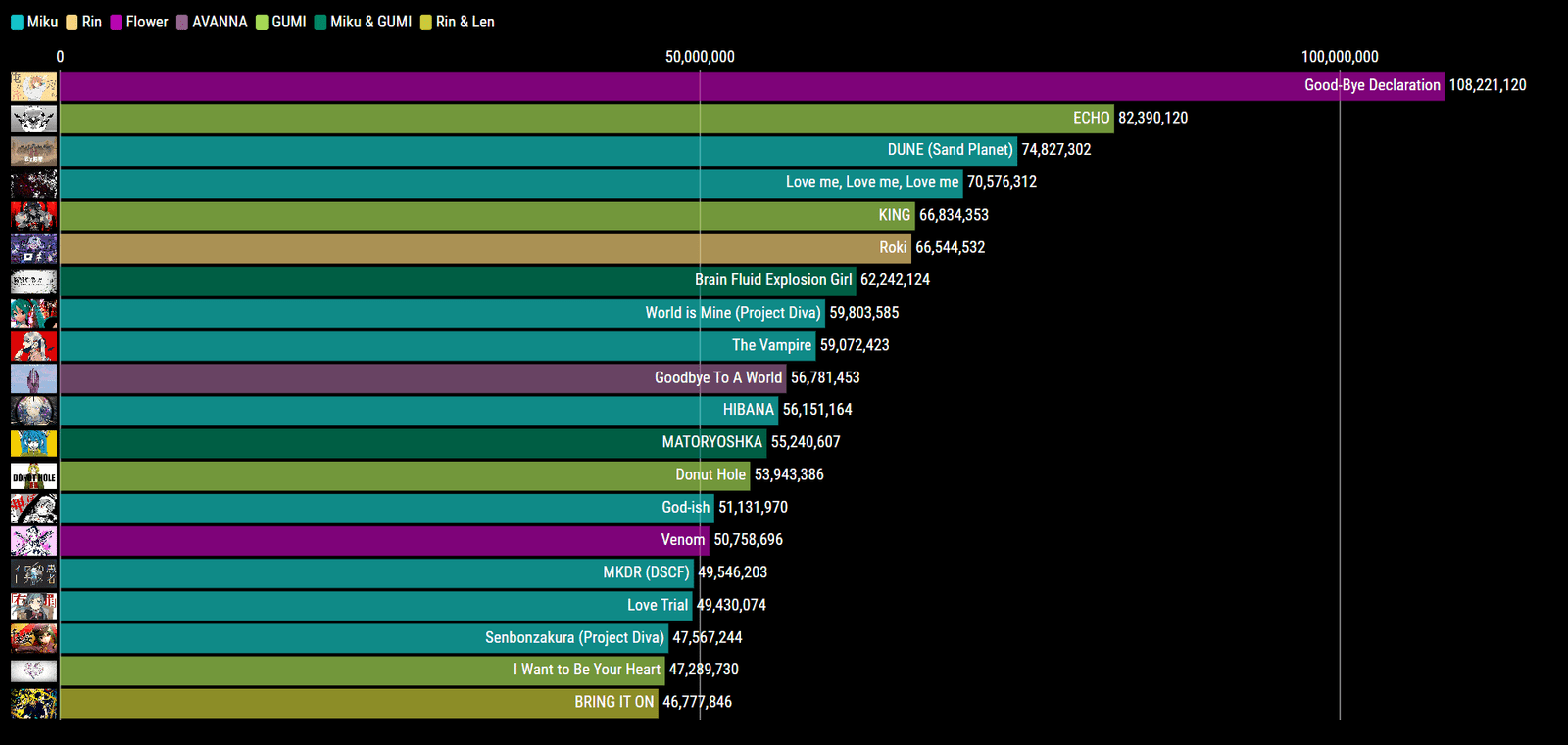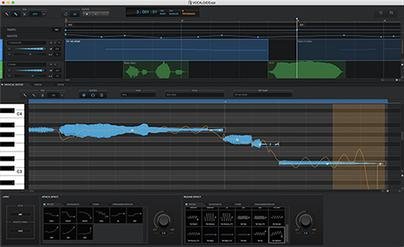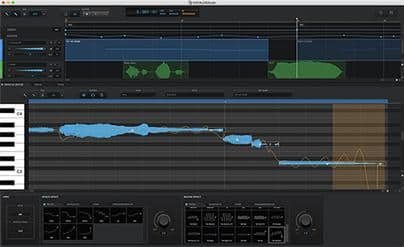Vocaloid voicebanks are digital tools that create singing voices. They are used by musicians to produce songs without human singers.
Understanding how Vocaloid voicebanks work can seem complex. But it's simpler than it looks. These voicebanks are software programs. They use recorded human vocals to generate new sounds. By typing in lyrics and melodies, you can create music. It's like having a virtual singer at your fingertips.
This guide will explain the basics. You'll learn how these voicebanks work, step by step. Soon, you'll see how easy and fun it can be to make music with Vocaloid. Whether you're a musician or just curious, this beginner’s guide is for you. Dive in and explore the world of Vocaloid!
Introduction To Vocaloid
Vocaloid is a fascinating technology that transforms text into singing. It uses voicebanks to produce realistic vocal sounds. Many beginners find it intriguing yet complex. This guide will help you understand the basics.
What Is Vocaloid?
Vocaloid is a software developed by Yamaha. It synthesizes singing by inputting melodies and lyrics. Users create songs without needing a human singer. The software uses “voicebanks” to generate the vocal sounds.
Voicebanks are collections of recorded vocal samples. These samples are from real human voices. They cover different phonetic sounds and pitches. The software combines these samples to produce a seamless song.
History And Evolution
Vocaloid was first released in 2004. Its early versions were basic but effective. The first voicebanks were in English and Japanese. Over time, the technology improved significantly.
The introduction of Vocaloid 2 in 2007 was a big milestone. It offered better sound quality and ease of use. This version saw the rise of popular characters like Hatsune Miku. These characters became cultural icons in Japan and beyond.
Vocaloid 3 and 4 introduced even more features. These versions supported more languages and had better vocal expression. The most recent version, Vocaloid 5, offers even greater flexibility. It allows users to create complex and realistic vocal performances.
Components Of A Vocaloid Voicebank
Understanding the components of a Vocaloid voicebank is essential for anyone starting out with Vocaloid software. A voicebank is a digital library of sounds, which are used to produce synthetic singing. Let's delve into the key parts of a Vocaloid voicebank and see how they work together to create realistic and expressive vocals.
Sound Samples
At the core of a Vocaloid voicebank are the sound samples. These are short recordings of a singer's voice. The recordings capture various pitches and tones. They form the foundation of the voicebank.
These sound samples are usually recorded in a professional studio. The process ensures high-quality audio. The recordings include different vowels and consonants. These are necessary to build a full range of vocal sounds.
Phonemes And Consonants
Phonemes are the distinct units of sound in a language. In a Vocaloid voicebank, each phoneme is individually recorded. They are then combined to create words and phrases.
Consonants play a crucial role too. They are recorded separately to ensure clarity. This separation allows for precise control over the vocal output. The software then stitches together phonemes and consonants to form coherent speech.
For example, to form the word “cat,” the software combines the phonemes “k,” “æ,” and “t.” This method gives the user flexibility. They can create a wide range of sounds from a limited set of recordings.
| Component | Description |
|---|---|
| Sound Samples | Short recordings of a singer's voice, covering various pitches and tones. |
| Phonemes | Distinct units of sound in a language, used to build words and phrases. |
| Consonants | Separate recordings of consonant sounds, ensuring clarity and precision. |
To summarize, the components of a Vocaloid voicebank work together seamlessly. Sound samples, phonemes, and consonants combine to create realistic and expressive synthetic singing. Understanding these elements is key to mastering Vocaloid software.
Creating A Voicebank
Creating a Vocaloid voicebank involves several steps. Each step is crucial to ensure the final product sounds natural and clear. Let’s dive into the main stages of creating a voicebank.
Recording Process
The recording process is the first step. A voice actor records various phonetic sounds. These sounds cover all possible syllables and tones. The recordings need to be clear and consistent. This consistency ensures high-quality output.
Editing And Tuning
After recording, the editing and tuning phase begins. The recorded sounds are then edited to remove any background noise. They are also adjusted for pitch and volume. This step ensures each sound matches the desired tone and quality.
Tuning is where the magic happens. It aligns the sounds to fit musical notes and melodies. This ensures the voicebank can sing smoothly and accurately. Proper tuning makes the voicebank sound realistic.
Software And Tools
Understanding how Vocaloid voicebanks work requires knowledge of the software and tools that power them. These tools help users create realistic singing voices from text. Let's dive into the main components you'll need.
Vocaloid Editor
The Vocaloid Editor is the heart of the system. It allows users to input lyrics and melody. The editor then converts these inputs into a realistic singing voice. Here's a quick overview of its features:
- Lyric Input: Users can type the lyrics directly into the editor.
- Melody Creation: Notes can be placed on a piano roll interface to create melodies.
- Phonetic Adjustment: Fine-tune the pronunciation of each word.
- Effect Controls: Adjust vibrato, pitch, and dynamics for a natural sound.
With these features, the Vocaloid Editor offers a wide range of customization options. This allows users to produce unique and professional-sounding vocal tracks.
Additional Plugins
Additional plugins enhance the capabilities of the Vocaloid Editor. These plugins provide extra effects, voices, and tools to refine your projects. Here are some common types of plugins:
- Reverb and Delay: Add spatial effects to make the voice sound more realistic.
- EQ and Compression: Fine-tune the audio quality and balance.
- Harmony Generators: Automatically create harmonies to enrich the vocal track.
Using these plugins, users can elevate the quality of their vocal productions. They offer greater flexibility and control over the final sound.
| Plugin Type | Purpose |
|---|---|
| Reverb and Delay | Add spatial effects |
| EQ and Compression | Balance and refine audio quality |
| Harmony Generators | Create harmonies automatically |
With the right combination of the Vocaloid Editor and additional plugins, users can create stunning vocal performances. These tools are essential for anyone looking to explore the world of Vocaloid voicebanks.
Programming The Voice
Programming a Vocaloid voice involves several steps. Each step is crucial for creating realistic and expressive vocal performances. The process starts with inputting lyrics and moves to adjusting pitch and tone.
Inputting Lyrics
To begin, you need to input the lyrics. This involves typing the words of the song into the Vocaloid software. Here are the steps:
- Open your Vocaloid software.
- Select the voicebank you want to use.
- Type the lyrics into the text box.
Ensure each syllable matches the melody. This will help the Vocaloid sing naturally. You can use phonetic symbols to improve pronunciation.
Adjusting Pitch And Tone
Once the lyrics are in place, the next step is adjusting the pitch and tone. This is where you can make the Vocaloid sound more human. Follow these steps:
- Select the note you want to adjust.
- Use the pitch bend tool to change the note's pitch.
- Adjust the tone to match the emotional feel of the song.
Pitch adjustments can make the voice go higher or lower. Tone adjustments can make the voice sound softer or stronger.
By carefully adjusting pitch and tone, you can create a performance that is both dynamic and expressive.

Credit: music.tutsplus.com
Synthesizing The Song
Creating music with Vocaloid involves several steps. One of the most important is synthesizing the song. This process turns the notes and lyrics into a realistic vocal performance. Let's dive into the details of this step.
Rendering Audio
Rendering audio is a crucial part of Vocaloid song synthesis. It involves converting MIDI data and text into sound. Here's how it works:
- The user inputs the melody and lyrics.
- The software processes this data using a voicebank.
- The voicebank contains pre-recorded vocal samples.
- The software matches the user input with these samples.
- The output is a series of sound files.
Each voicebank offers a unique vocal quality. This allows for various vocal styles and tones.
Final Adjustments
Once the audio is rendered, final adjustments are necessary. These tweaks ensure the vocal performance sounds natural. Here are some common adjustments:
- Timing – Adjust the timing of notes and words.
- Pitch – Fine-tune the pitch for accuracy.
- Dynamics – Control the volume and intensity.
- Expression – Add vibrato and other vocal effects.
These adjustments can make a huge difference. They can turn a good performance into a great one. Small changes can enhance the overall quality.
In summary, synthesizing a song with Vocaloid involves careful rendering and adjustments. Each step is vital for creating a realistic vocal performance.
Popular Vocaloid Characters
In the world of Vocaloid, certain characters have captured the hearts of many fans. These characters are not just voicebanks; they have personalities and stories. They have become icons in the music industry. Let's explore some of the most popular Vocaloid characters.
Hatsune Miku
Hatsune Miku is the most well-known Vocaloid character. She has turquoise twin-tails and a futuristic outfit. She debuted in 2007 and quickly became a sensation. Miku's voicebank is versatile, fitting many genres of music. She has performed in live concerts as a hologram. Her songs often top the charts in Japan. Miku has a large fan base worldwide.
Kagamine Rin And Len
Kagamine Rin and Len are another pair of popular Vocaloid characters. They are often portrayed as twins or mirror images. Rin has a high-pitched, energetic voice. Len's voice is slightly deeper, adding variety to their duets. They debuted in 2007, shortly after Miku. Many fans love their dynamic and contrasting voices. Rin and Len frequently appear in songs and live performances.
Applications And Uses
Vocaloid voicebanks are not just digital tools for creating synthetic voices. They have a wide range of applications and uses that make them invaluable in various fields. From music production to live performances, these voicebanks have found their place in the hearts of many artists and performers.
Music Production
In music production, Vocaloid voicebanks can be used to create unique vocal tracks. Musicians can compose songs without needing a human singer. This is particularly useful for indie artists who may not have access to professional vocalists. Here's how it works:
- Choose a voicebank that fits the style of the music.
- Input lyrics and melodies into the software.
- Adjust the pitch, tone, and vibrato to make the voice sound more natural.
Using Vocaloid voicebanks can save time and money. It also allows for creative freedom, enabling artists to experiment with different vocal styles and effects.
Live Performances
Vocaloid voicebanks are also popular in live performances. They bring virtual singers to life on stage. This is done through holographic technology and other visual effects. Here’s a typical setup:
- Pre-record the vocal tracks using the Vocaloid software.
- Sync the vocals with animated avatars.
- Use projectors and screens to display the avatars on stage.
This creates an immersive experience for the audience. Concerts featuring Vocaloid characters are becoming increasingly popular worldwide. They offer a unique blend of music and technology, captivating fans of all ages.
Future Of Vocaloid
Vocaloid technology is advancing rapidly. Fans and creators eagerly await new features. The future holds exciting possibilities for Vocaloid voicebanks. This section explores the potential advancements and cultural impacts.
Technological Advancements
Technological advancements in Vocaloid are happening quickly. Here are some key areas:
- Improved Voice Quality: Future voicebanks will sound more natural. They will mimic human speech better.
- AI Integration: AI will enhance voice synthesis. It will allow more expressive singing styles.
- Multilingual Support: Future voicebanks will support more languages. This will expand the global reach of Vocaloid.
- Real-Time Singing: Real-time singing capabilities are on the horizon. This will enable live performances with Vocaloid singers.
Cultural Impact
Vocaloid's cultural impact is immense. It continues to grow and evolve:
- Global Fanbase: Vocaloid has a worldwide fanbase. Fans create and share music across cultures.
- Virtual Concerts: Virtual concerts are becoming popular. They attract large audiences from around the world.
- Collaborations: Artists collaborate with Vocaloid characters. This creates unique and innovative music.
- Merchandising: Vocaloid characters are featured in various merchandise. This includes figures, apparel, and accessories.
The future of Vocaloid is bright. Technological advancements and cultural impact will shape its evolution.

Credit: music.tutsplus.com

Credit: www.youtube.com
Frequently Asked Questions
What Is A Vocaloid Voicebank?
A Vocaloid voicebank is a digital library containing pre-recorded vocal samples. These samples are used by the Vocaloid software to synthesize singing.
How Do Vocaloid Voicebanks Work?
Vocaloid voicebanks work by combining phonetic sounds to create words and sentences. Users input lyrics and melodies to generate singing.
Can Anyone Use Vocaloid Voicebanks?
Yes, anyone can use Vocaloid voicebanks. They are designed for both beginners and professionals to create music.
Are Vocaloid Voicebanks Customizable?
Yes, Vocaloid voicebanks are customizable. Users can adjust pitch, tone, and dynamics to fit their musical needs.
Conclusion
Understanding Vocaloid voicebanks opens a world of creative possibilities. They allow users to create music with unique vocal styles. The process may seem complex at first, but practice makes it easier. Start exploring different voicebanks and experiment with their features.
You will soon find your own style. Keep learning and enjoy the journey. Vocaloid offers endless opportunities for musical expression. Dive in, have fun, and make your own melodies.









